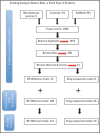Evening dosing of antihypertensive therapy to reduce cardiovascular events: a third type of evidence based on a systematic review and meta-analysis of randomized trials
- PMID: 25039609
- PMCID: PMC8031640
- DOI: 10.1111/jch.12354
Evening dosing of antihypertensive therapy to reduce cardiovascular events: a third type of evidence based on a systematic review and meta-analysis of randomized trials
Abstract
Nighttime blood pressure strongly predicts cardiovascular events (CVEs). Further, a preliminary trial has shown decreased CVEs from evening vs morning dosing of antihypertensive therapy. Is there additional evidence for evening dosing? The authors systematically classified all hypertension trials as evening dosing trials (EDTs) or usual dosing trials (UDTs). Meta-analyses provided standardized hazard ratios for CVEs for EDTs (HREDT s ) and UDTs (HRUDT s ). HREDT s /HRUDT s gave the relative risk (RR) from evening vs usual dosing. Among 175 trials, 5 EDTs were discovered. The RR for CVEs (95% confidence limits) from evening vs usual dosing was 0.63 (0.43-0.92; P=.016). After adjustment for drug class, the RR was 0.54 (0.34-0.85; P=.008). Unlike other EDTs, the Heart Outcomes Prevention Evaluation (HOPE) study administered its entire antihypertensive dose prior to sleep and gave the greatest risk reduction. This study provides a third type of evidence suggesting a beneficial effect from evening dosing of antihypertensive therapy. Head-to-head, multicenter trials are needed to test this strategy.
©2014 Wiley Periodicals, Inc.
Figures



Comment in
-
Is evening dosing of antihypertensive therapy ready for prime time?J Clin Hypertens (Greenwich). 2014 Aug;16(8):557-8. doi: 10.1111/jch.12355. Epub 2014 Jun 23. J Clin Hypertens (Greenwich). 2014. PMID: 24957216 Free PMC article. No abstract available.
References
-
- Veterans Administration . Effects of dosing on morbidity in hypertension. Results in patients with diastolic blood pressures averaging 115 through 129 mm Hg. JAMA. 1967;202:1028–1034. - PubMed
-
- Veterans Administration . Effects of dosing on morbidity in hypertension. II. Results in patients with diastolic blood pressure averaging 90 through 114 mm Hg. JAMA. 1970;213:1143–1152. - PubMed
-
- National Institute for Health and Clinical Excellence . Hypertension: Clinical management of primary hypertension in adults. Newcastle Guideline Development and Research Unit, National Clinical Guideline Center, and the British Hypertension Society, August 2011.
-
- Mancia G, Fagard R, Narkiewicz K, et al. 2013 ESH/ESC Guidelines for the management of arterial hypertension: the Task Force for the management of arterial hypertension of the European Society of Hypertension (ESH) and of the European Society of Cardiology (ESC). J Hypertens. 2013;31:1281–1357. - PubMed
-
- James PA, Oparil S, Carter BL, et al. 2014 Evidence‐Based Guideline for the Management of High Blood Pressure in Adults: Report From the Panel Members Appointed to the Eighth Joint National Committee (JNC 8). JAMA. 2014;311:507–520. - PubMed
Publication types
MeSH terms
Substances
LinkOut - more resources
Full Text Sources
Other Literature Sources
Medical

